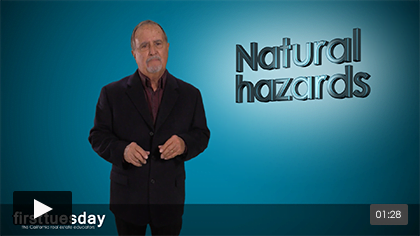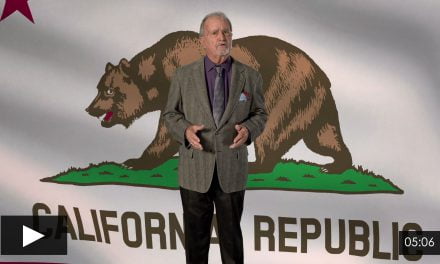MLO Mentor is an ongoing series covering compliance best practices for mortgage loan originators (MLOs). This article gives an overview of California state’s Homeowner Bill of Rights (HBOR).
California’s Homeowner Bill of Rights was signed into law in 2012 at the tail end of the Great Recession and foreclosure crisis that forced many residents out of their homes, some unfairly and unlawfully. Its aim was to give qualified homeowners facing foreclosure a meaningful opportunity to obtain a mortgage modification and keep their homes. [Calif. Civil Code §2923.4]
This Homeowner Bill of Rights was automatically repealed January 1, 2018. Senate Bill (SB) 818, has reinstated many of the provisions of the original bills.
Homeowner Bill of Rights update
The biggest changes the Homeowner Bill of Rights made were to prevent:
- dual-tracking foreclosure, when a homeowner is simultaneously going through the mortgage modification process and the foreclosure process;
- robo-signing of foreclosure documents, heightening the risk for wrongful foreclosure; and
- more than one point of contact for distressed homeowners in the foreclosure process.
These protections are once again in place for first lien mortgages secured by residential property. The main differences between the original Homeowner Bill of Rights and the SB 818 version are new exceptions:
- allowing servicers to be exempt from the provisions in SB 818 when an application for a mortgage modification is received less than five days before a scheduled foreclosure sale; [CC §2924.18(a)] and
- exempting servicers from the telephone contact requirements of SB 818 when the homeowner has notified the servicer in writing to cease and desist all communications. [CC §2923.5(e)(2)(C)(ii)]
When a homeowner requests a foreclosure prevention alternative such as a mortgage modification, the servicer needs to promptly establish a single point of contact for the homeowner. This will prevent confusion and help prevent the homeowner from becoming lost in the shuffle of other homeowners considering foreclosure prevention options. [CC §2923.7(a)]
Mortgage servicers may not record a notice of default (NOD) until:
- at least 30 days have passed after initially contacting the homeowner; or
- if the servicer is unable to contact the homeowner, they have satisfied the due diligence requirements made to reach the homeowner, including mailing a notice and calling at different times of day. [CC §2923.5(a)(1)(A)]
Further, servicers may not record an NOD when a homeowner submits a complete application for a loan modification at least five business days before a scheduled foreclosure sale. Once the servicer provides the homeowner with a written decision on the loan modification, the servicer may proceed with the foreclosure process if necessary. [CC §2923.5(a)(1)(B)]
When the homeowner is rejected for a loan modification, the servicer needs to wait at least 31 days after the homeowner is notified before recording an NOD or — if an NOD was already recorded — recording a notice of trustee’s sale (NOTS). [CC §2923.6(e)]
When the homeowner is approved for a loan modification, the servicer may not proceed with the foreclosure process as long as the homeowner complies with the terms of the modification. [CC §2924.18(a)(2)(A)]
Servicers may not charge homeowners any fees to apply or obtain a mortgage modification or other foreclosure prevention alternative. [CC §2924.11(e)]
The bill gives California the right to sue lenders and banks up to $50,000 for violating the laws. [CC §2924.19(b)]
Verbal agreements
A frequently asked question of the Homeowner Bill of Rights involves verbal agreements. Is a verbal agreement to postpone a sale enforceable against foreclosure?
Consider Granadino v. Wells Fargo Bank, N. A., a relevant case study on this topic from 2015.
Here, a borrower defaulted on their mortgage and was issued an NOD on May 24, 2010. Within the proper timeline, the lender filed an NOTS. The borrower hired an attorney to assist them with negotiating a loan modification with the lender.
Through the attorney, the borrower obtained a postponement of the trustee’s sale from September 24, 2011 to October 17, 2011 while mortgage modification negotiations were in progress.
On October 17, 2011, the attorney’s office called the lender and was told the trustee’s sale was under active mortgage modification review, so the trustee’s sale date was no longer scheduled.
A month after the lender’s representative gave verbal assurance of the indefinite postponement of the trustee’s sale, the borrower received a written notice of their mortgage modification denial.
A trustee’s sale date was set for December 16, 2011.
After the borrower received the written notice, the attorney called the lender and informed the lender’s representative the borrower’s tax returns pursuant to the mortgage modification were being sent over. The lender’s representative acknowledged the sending of the tax returns.
On December 16, 2011, the property was sold at a trustee’s sale.
The borrower sought to remain in the residence while pursuing money losses, claiming the lender improperly foreclosed since it verbally agreed to postpone the trustee’s sale and accepted the tax returns after the written notice of modification denial was received, thus precluding the borrower from reinstating their mortgage.
The lender claimed the borrower was not entitled to money losses since the borrower was notified in writing their mortgage was removed from modification review and the foreclosure process would resume.
Ultimately, a California court of appeals held the borrower was not entitled to money losses or continuing occupancy of the residence since the mortgage holder properly provided all necessary notices satisfying foreclosure requirements. [Granadino v. Wells Fargo Bank, N. A. (2015) CA 2nd B256511]
The California Homeowner Bill of Rights is still being tested in courts today. Click through these related articles for more up-to-date decisions and interpretations on this legislation.
Related articles:














